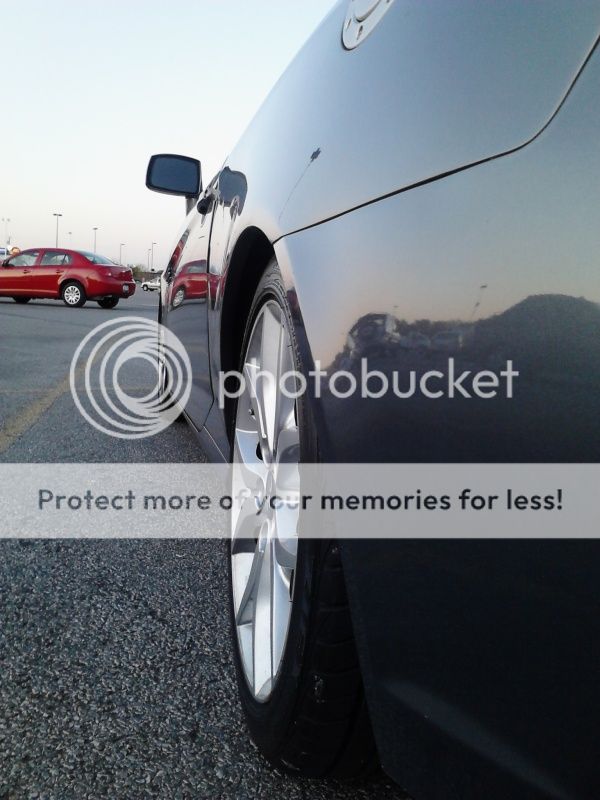Camber
The camber angle identifies how far the tire slants away from vertical when viewed directly from the front or back of the vehicle. Camber is expressed in degrees, and is said to be negative when the top of the tire tilts inward toward the center of the vehicle and positive when the top leans away from the center of the vehicle.
Since street suspensions cannot completely compensate for the outer tire tipping towards the outside when the vehicle leans in a corner, there isn't a magical camber setting that will allow the tires to remain vertical when traveling straight down the road (for more even wear), and remain perpendicular to the road during hard cornering (for more generous grip).
Different driving styles can also influence the desired camber angle as well. An enthusiastic driver who corners faster than a reserved driver will receive more cornering grip and longer tire life from a tire aligned with more negative camber. However with the aggressive negative camber, a reserved driver's lower cornering speeds would cause the inside edges of the tires to wear faster than the outside edges.
What's the downside to negative camber? Negative camber leans both tires on the axle towards the center of the vehicle. Each tire develops an equal and offsetting "camber thrust" force (the same principle that causes a motorcycle to turn when it leans) even when the vehicle is driven straight ahead. If the vehicle encounters a bump that only causes one tire to lose some of its grip, the other tire's negative camber will push the vehicle in the direction of the tire that lost grip. The vehicle may feel more "nervous" and become more susceptible to tramlining. Excessive camber will also reduce the available straight-line grip required for rapid acceleration and hard stops.
Appropriate camber settings that take into account the vehicle and driver's aggressiveness will help balance treadwear with cornering performance. For street-driven vehicles, this means that tire wear and handling requirements must be balanced according to the driver's needs. The goal is to use enough negative camber to provide good cornering performance while not requiring the tire to put too much of its load on the inner edge while traveling in a straight line. Less negative camber (until the tire is perpendicular to the road at zero camber) typically will reduce the cornering ability, but results in more even wear.
Even though they have some of the most refined suspensions in the world, the next time you see a head-on photo of a Formula 1 car or CART Champ Car set up for a road course, notice how much negative camber is dialed into the front wheels. While this is certainly an example of wear not being as important as grip, negative camber even helps these sophisticated racing cars corner better.
![Image]()







